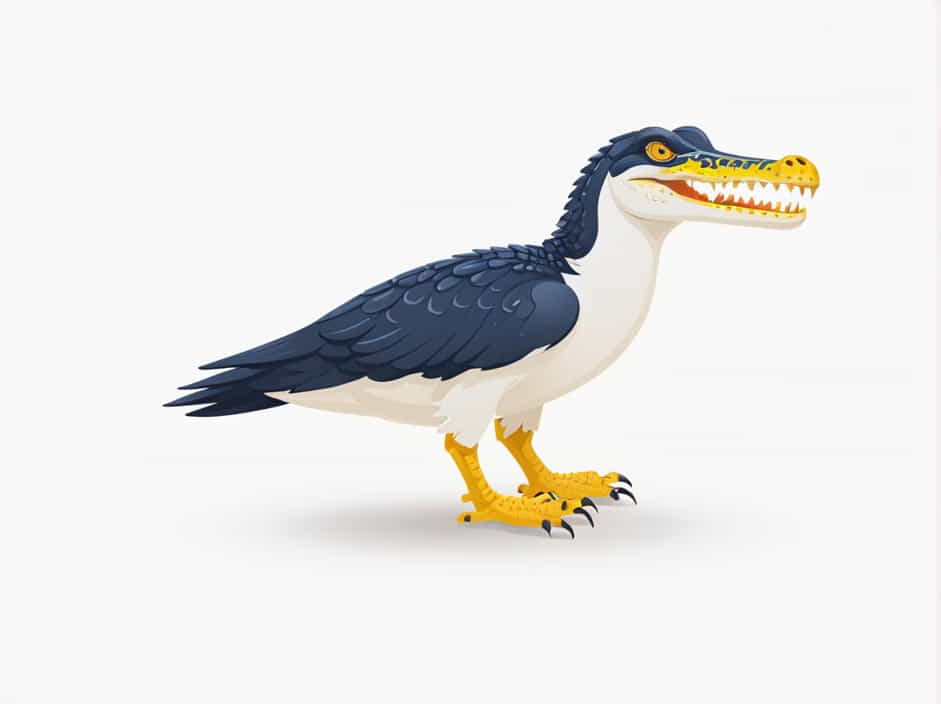In the animal kingdom, symbiotic relationships play a crucial role in maintaining balance within ecosystems. One of the most fascinating partnerships is between the Nile crocodile (Crocodylus niloticus) and the Egyptian plover bird (Pluvianus aegyptius). This unusual duo demonstrates a mutualistic relationship, where both species benefit from their interaction.
In this topic, we will explore the nature of their relationship, how it benefits both species, and the scientific debate surrounding this intriguing behavior.
What Is a Symbiotic Relationship?
A symbiotic relationship is a long-term interaction between two different species, which can be classified into three main types:
- Mutualism – Both species benefit.
- Commensalism – One species benefits, while the other is unaffected.
- Parasitism – One species benefits at the expense of the other.
The Nile crocodile and plover bird are often said to have a mutualistic relationship, meaning they both gain advantages from their interaction.
Meet the Nile Crocodile
The Nile crocodile is one of the largest and most powerful predators in Africa. It inhabits freshwater habitats such as rivers, lakes, and swamps, preying on fish, birds, and even large mammals.
Key Characteristics of the Nile Crocodile
- Size: Can grow up to 5-6 meters (16-20 feet) long.
- Weight: Can weigh between 500 to 1,000 kg (1,100 to 2,200 lbs).
- Lifespan: Can live up to 70-100 years in the wild.
- Diet: Carnivorous, feeding on fish, birds, and land animals.
One challenge that Nile crocodiles face is dental hygiene. Bits of meat and debris often get stuck in their sharp, powerful teeth, leading to infections if not cleaned. This is where the Egyptian plover bird is believed to play a vital role.
Meet the Egyptian Plover Bird
The Egyptian plover, also known as the crocodile bird, is a small bird found in Africa, often near rivers and lakes where crocodiles live.
Key Characteristics of the Egyptian Plover
- Size: About 19-21 cm (7.5-8.3 inches) long.
- Weight: Around 50-60 grams (1.8-2.1 ounces).
- Diet: Insects, parasites, and food debris.
- Habitat: Found near freshwater sources.
This bird is commonly believed to have a special cleaning relationship with the Nile crocodile, helping to remove food remains and parasites from the crocodile’s teeth.
How Does the Nile Crocodile and Plover Bird Relationship Work?
1. The Plover Bird Cleans the Crocodile’s Teeth
When a Nile crocodile needs dental cleaning, it is said to open its mouth and remain still. The Egyptian plover bird then enters the crocodile’s mouth and starts pecking at bits of food and parasites stuck between its teeth.
This benefits the crocodile because it:
- Prevents infection and disease by keeping its teeth clean.
- Reduces bad breath, which could help in hunting.
For the plover bird, this relationship is also beneficial because:
- It gets a free meal of leftover meat and parasites.
- It has an easy and reliable food source.
2. Trust Between Predator and Prey
This behavior, if true, would require an incredible level of trust between the two species. The Nile crocodile, which is a deadly predator, must resist the urge to snap its jaws shut while the plover bird cleans its teeth.
Scientists and observers have often questioned whether this relationship is truly as common as legends suggest, or if it is more of an occasional occurrence.
Is the Crocodile-Plover Relationship Real?
Although this story is widely shared, there is limited scientific evidence to fully confirm this interaction happens regularly.
Arguments in Favor
- Anecdotal Reports: Some explorers and researchers claim to have seen plover birds cleaning crocodile teeth in the wild.
- Logical Benefit: The relationship makes sense, as dental hygiene is important for crocodiles, and plover birds eat insects and meat scraps.
Arguments Against
- Lack of Scientific Studies: No major scientific studies have conclusively documented this interaction in detail.
- Crocodile Behavior: Some experts argue that crocodiles do not require external help for dental cleaning, as their teeth naturally regenerate.
Despite the debate, the story of the Nile crocodile and plover bird remains one of the most intriguing and well-known examples of animal mutualism.
Other Examples of Mutualism in Nature
The animal kingdom is full of fascinating mutualistic relationships, including:
- Oxpeckers and Large Mammals – Oxpecker birds sit on the backs of rhinos, zebras, and buffalo to eat parasites, benefiting both species.
- Clownfish and Sea Anemones – Clownfish gain protection from sea anemones, while anemones receive food scraps.
- Bees and Flowers – Bees collect nectar from flowers, helping pollinate plants in return.
These relationships highlight the importance of cooperation in nature, where different species help each other survive.
The Nile crocodile and Egyptian plover bird are often cited as a classic example of mutualism in nature. While scientific evidence remains inconclusive, the idea of a small bird fearlessly cleaning the teeth of a giant predator continues to fascinate researchers and wildlife enthusiasts.
Whether completely factual or partly mythical, this story demonstrates the incredible relationships that exist in nature. It also reminds us of the delicate balance that keeps ecosystems thriving, where even the most unlikely species can find ways to coexist and benefit from each other.
